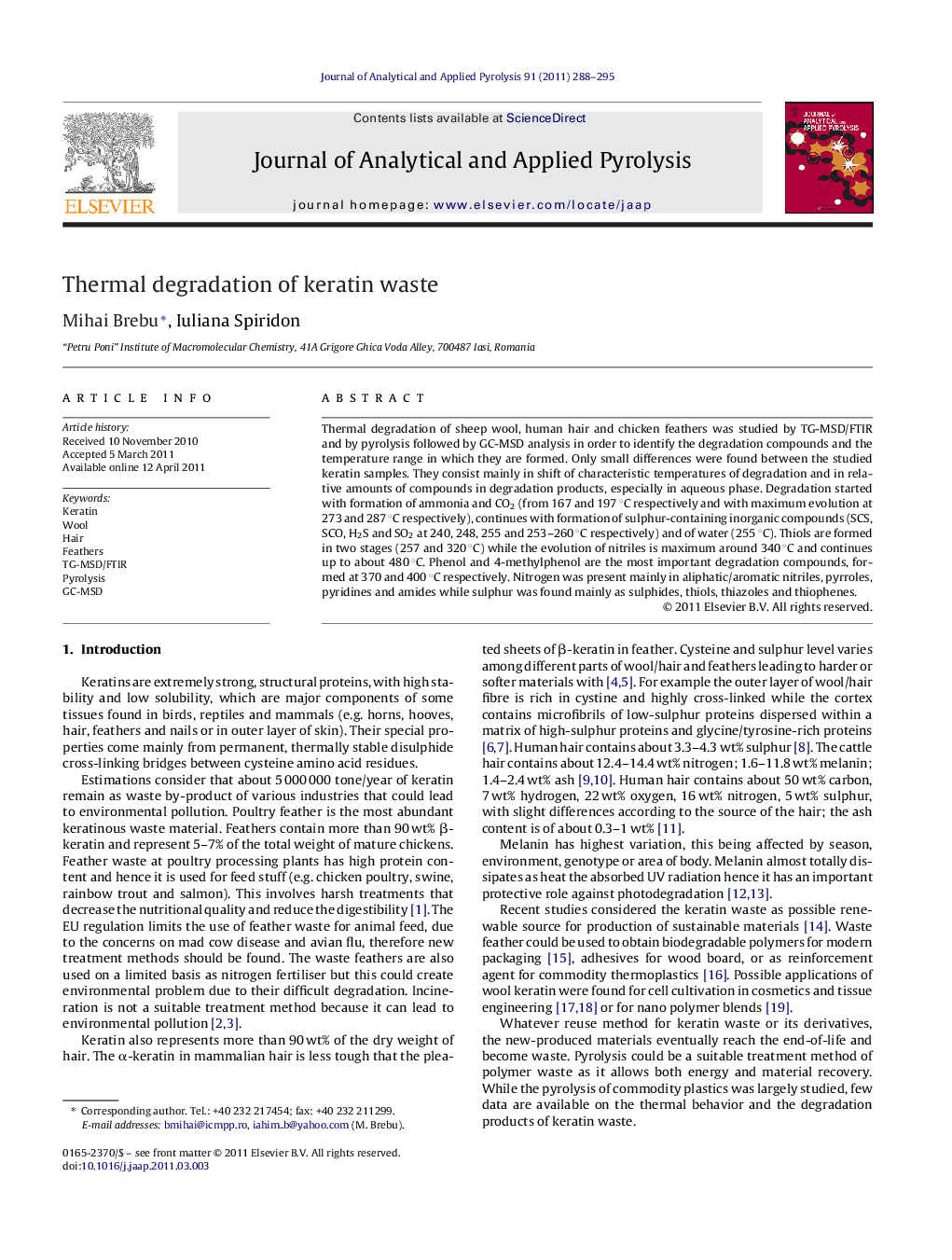| Article ID | Journal | Published Year | Pages | File Type |
|---|---|---|---|---|
| 1196944 | Journal of Analytical and Applied Pyrolysis | 2011 | 8 Pages |
Thermal degradation of sheep wool, human hair and chicken feathers was studied by TG-MSD/FTIR and by pyrolysis followed by GC-MSD analysis in order to identify the degradation compounds and the temperature range in which they are formed. Only small differences were found between the studied keratin samples. They consist mainly in shift of characteristic temperatures of degradation and in relative amounts of compounds in degradation products, especially in aqueous phase. Degradation started with formation of ammonia and CO2 (from 167 and 197 °C respectively and with maximum evolution at 273 and 287 °C respectively), continues with formation of sulphur-containing inorganic compounds (SCS, SCO, H2S and SO2 at 240, 248, 255 and 253–260 °C respectively) and of water (255 °C). Thiols are formed in two stages (257 and 320 °C) while the evolution of nitriles is maximum around 340 °C and continues up to about 480 °C. Phenol and 4-methylphenol are the most important degradation compounds, formed at 370 and 400 °C respectively. Nitrogen was present mainly in aliphatic/aromatic nitriles, pyrroles, pyridines and amides while sulphur was found mainly as sulphides, thiols, thiazoles and thiophenes.
